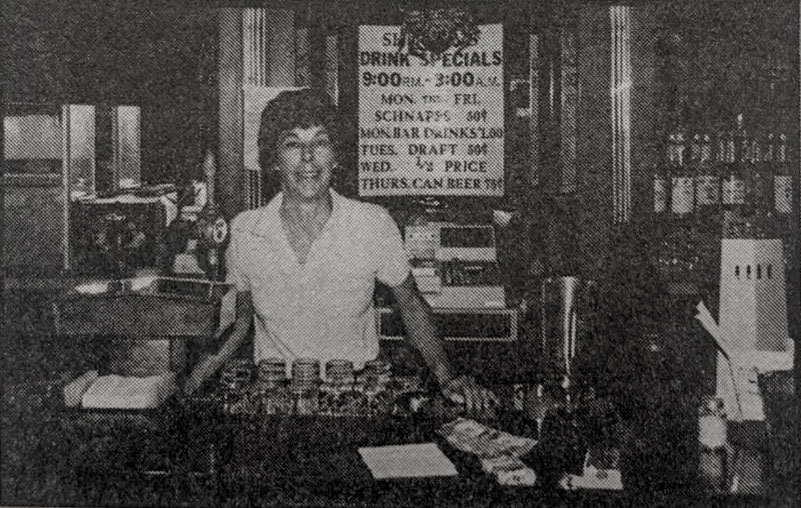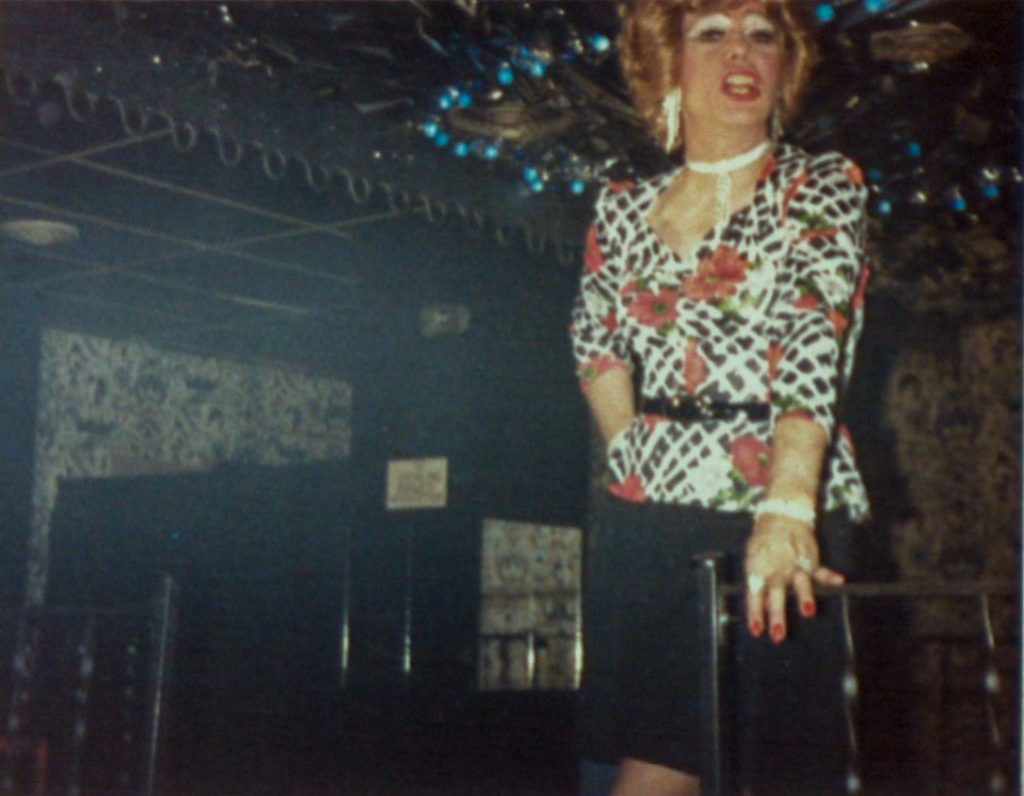Shirley’s Place was a bar and restaurant in the neighborhood of Indianapolis from October 1983 to May 1994. At the time, there were substantially fewer lesbian bars in Indianapolis than bars aimed at a gay male clientele. The bar also played a key role in making drag performances more mainstream and exposing its straight clientele to the art form. Transgender people also felt welcome at Shirley’s Place when compared to other alternative lifestyle bars that implemented strict dress codes in Indianapolis at that time.

Though Shirley’s Place served both lunch and dinner, it was better known as a show bar. It featured weekly and benefit shows to raise funds for the growing AIDS epidemic. The bar was an early supporter of the , hosting a benefit show to collect donations for their AIDS fund in October 1985 and becoming an annual stop on its bus tour.

The bar implemented a few changes from 1984 to 1985 to gain foothold in the larger LGBTQ+ community. Advertisements such as “Guys & Gals Welcome” were aimed at expanding the bar’s clientele beyond women to include men.
In September 1985, Manwaring changed the bar’s name to Shirley’s One Way, known as “One Way” within the LGBTQ+ community. The same philanthropic spirit guided One Way as had its previous iteration. The bar continued to raise money for causes related to the HIV/AIDS epidemic. The PWA Pantry, the food pantry for patients with AIDS, and the Celebration on the Circle, the predecessor to , were benefactors of One Way’s fundraising.

The 1990s marked a period of change for Shirley’s One Way. In January 1992, Manwaring sold the bar to Carl Mandenberg, who immediately renamed it Tubes. Tubes continued to serve men and women and styled itself after Sidetrack, a well-known LGBTQ+ bar in Chicago. From 1995 to 1996, Tubes was sold twice and renamed each time: first to Club 151 and then to Club Cabaret.
In the bar’s incarnation as Club Cabaret beginning in September 1996, owner Alan Eaton transformed it into a trendy show bar. Improvements included a modern sound and lighting system, stage footlights, and new dressing rooms for performers. Knowledgeable observers credited the venue for elevating the visibility and quality of drag performance in the city. Eaton sold the club to Paul Eckert, former owner of the , in the early 2000s.
Under Eckert’s backing, the club found moderate success. It hosted the 2002 Miss Gay Indianapolis competition but closed in 2005, ending the location’s legacy as a hub for LGBTQ+ nightlife. In August 2005, Eckert sold the building to Mary Varzo, who opened a bar there called the Tip Top Tavern, the name of the bar that had predated Shirley’s Place. Upon the Tip Top Tavern’s closure in February 2012, the building’s new owner converted it into private offices.
CITE THIS ENTRY
APA:
Schabel, G. (2025). Shirley’s One Way. Encyclopedia of Indianapolis. Retrieved Dec 12, 2025, from https://indyencyclopedia.org/shirleys-one-way/.
MLA:
Schabel, Gipson. “Shirley’s One Way.” Encyclopedia of Indianapolis, 2025, https://indyencyclopedia.org/shirleys-one-way/. Accessed 12 Dec 2025.
Chicago:
Schabel, Gipson. “Shirley’s One Way.” Encyclopedia of Indianapolis, 2025. Accessed Dec 12, 2025. https://indyencyclopedia.org/shirleys-one-way/.

Help improve this entry
Contribute information, offer corrections, suggest images.
You can also recommend new entries related to this topic.